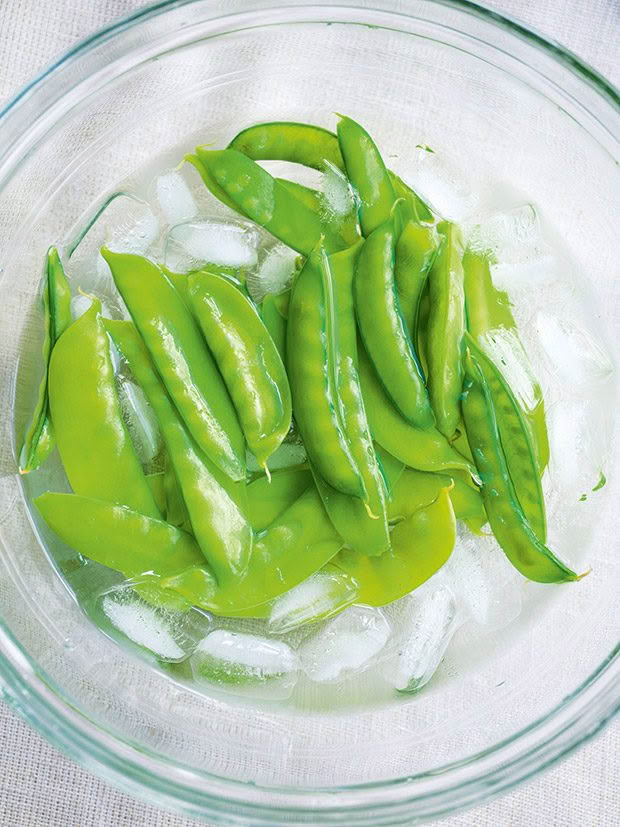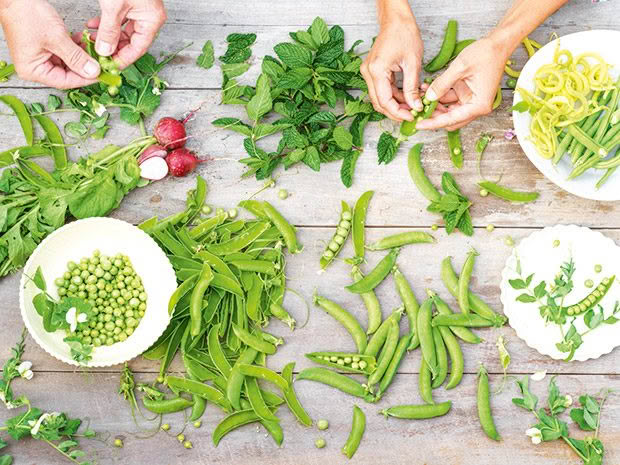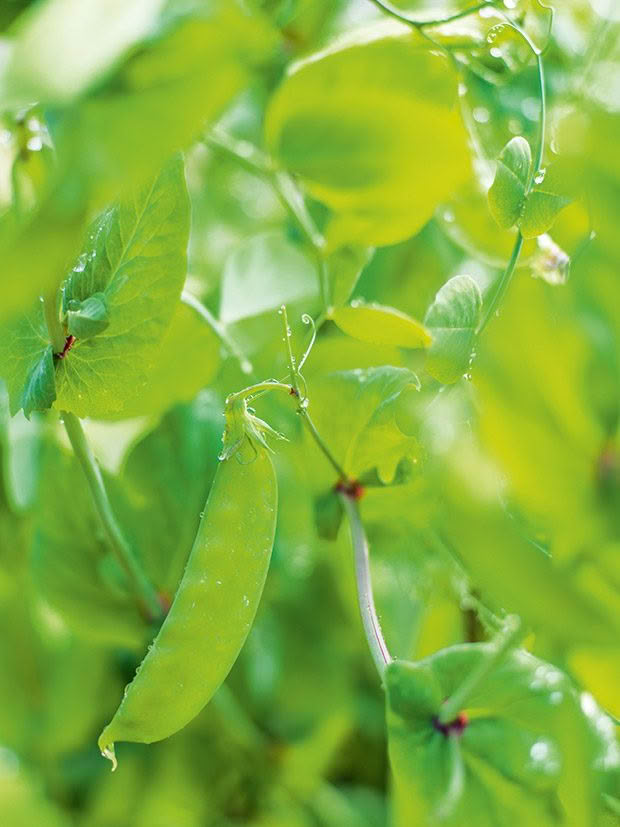Nadia Lim’s quick tips for growing peas

Photo: Rachael McKenna
There’s nothing quite like the flavour of freshly picked peas from the garden.
Words: Extract from Nadia: A Seasonal Journal Photos: Rachael McKenna, Matt Quérée
Freshly picked peas are a true delight. Some need shelling, while others – such as snow peas and sugar snaps (also known as mange tout) – can be eaten straight from the vine. This is how kids typically love to eat them – mine can’t get enough of them.
QUICK TIPS
Best grown from seed
Plant from autumn to winter in warm areas; early spring in cooler regions
Space 15-20cm apart in rows about 60cm apart
65-100 days from sowing to harvesting, depending on the variety
Crop rotation: Ideal for following nitrogen-hungry brassicas since peas, being legumes, replenish nitrogen in the soil
Plant family: Fabaceae
WHAT TYPE TO PLANT

Photo: Matt Quérée
Snow peas are eaten as immature pods before the peas fill in; pick sugar snap peas when they are fully mature but still sweet and tender. Shelling and edible-podded peas come in dwarf or tall varieties to suit your growing preferences. Both types require the same growing conditions of full sun and free-draining soil.
WHERE TO GROW
It’s best to sow peas where they are to be grown, but keep in mind that cold, wet soil will cause the seeds to rot. Moist soil is fine, but wet soil is not. A raised bed may be your best bet if your garden soil is soggy. If it’s still too cold outside and you want to get a head start, sow your seeds in cardboard toilet-roll inners and transplant them into the garden when seedlings are 8-10cm high. Sow to a depth of about 2.5cm.
PROVIDE SUPPORT

Photo: Rachael McKenna
Tall varieties should be staked or grown against a support, such as a teepee or trellis. Dwarf varieties don’t need staking, although a row of hoops will keep flowers and pods clear of the soil.
SOWING
Sow seeds successively (every 2-3 weeks) to extend the picking season. Pea planting can continue until October or early November in cooler areas, but as the weather warms up, flowers tend to drop, and yields decrease.
 This article first appeared in Nadia: A Seasonal Journal Magazine.
This article first appeared in Nadia: A Seasonal Journal Magazine.

